By Alex Trukan
With so many team trying to play out from the back it is important to know how to force them into certain direction and certain way of playing. One of the strategies a defending team might want to employ is forcing the opposition to pass long when they wanted to patiently combine through the thirds. This would be useful if opposition midfielders are clever on the ball, strikers like to receive only in the final third or when our back line deals with long balls well. There are of course much more situations when this strategy would be useful. Forcing defenders to go long is a process which is based on cooperation of the whole team. Some teams that try to employ this are usually unsuccessful because players lack understanding how to work together as a team to achieve this. This article describes couple of ways on how to force the opposition to go long.
First decision to make is whether we want to get the opposition to play long from the goalkeeper or do we want to force defenders on the ball (to then force them long). In the first option is important to cut the options to go short into defenders. This might require two strikers (to match up two centre backs) or two strikers and one centre midfielder (to match up opposition’s defensive midfielder). Certain players might be left available to direct passes. On the diagram below we can see two full backs left open on purpose to force goalkeeper to pass long into those areas. If these were marked closer, the more likely option would become playing long into strikers. This is why, the team has to decide where exactly they want to direct the opposition.
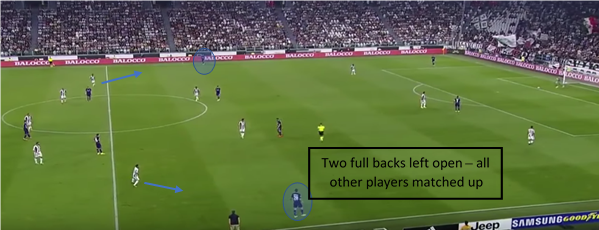
If the goalkeeper decides to play short even with centre backs under pressure, the nearest player should apply immediate pressure on the ball to force wide. Players around the ball should apply man oriented pressing closing all the nearest options to play short. If the team wants the opposition to return to the goalkeeper (to then force him long), this option should be left free and the pressurising player might consider forcing inside rather than outside.
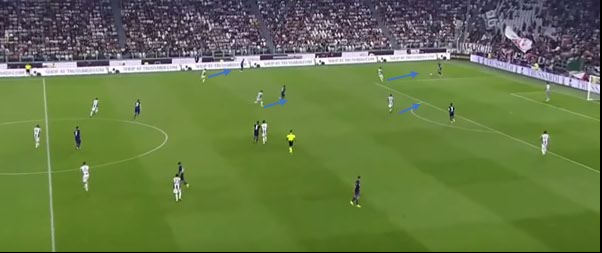
If the team decides to make the goalkeeper play short and then force centre backs long, the block has to drop backwards and leave two centre backs open. Defending players should look to position themselves in the centre of the pitch and leave wide areas open. Centre backs will be usually positioned around the edges of the penalty box so this will naturally force them to go wide and if the options are closed down, they will have to pass longer.
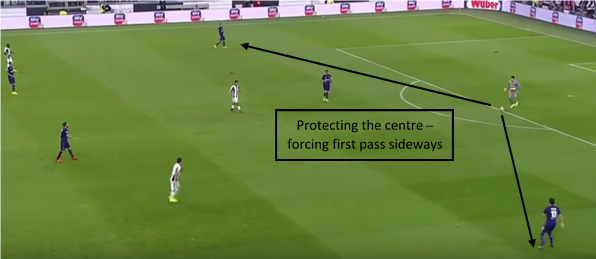
As the centre back gets on the ball, nearest striker (if playing with two) should apply pressure on the ball from inside-out. Second striker should cut the option into the other centre back and midfielders should match up. When playing with three CM’s against two CM’s there will be one free man to support centre backs and pick up second balls.
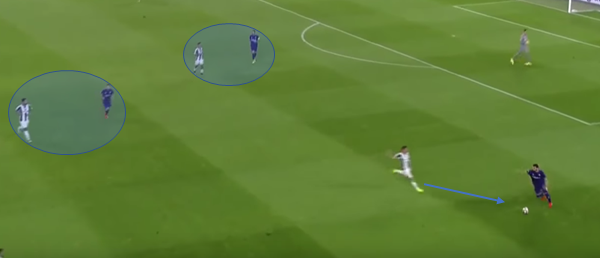
Another important aspect is cutting the back pass option. If the ball is close to the opposition’s goal, second striker (further away from the ball) would press and cut the back pass options. If the ball is higher up the pitch, it would be responsibility of the nearest striker to the ball as he will not be occupied with pressing the ball (wide midfielder or wingback will do it depending on the shape used).
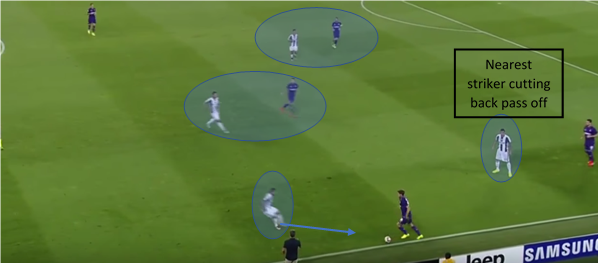
When defending deeper on the own half, it is important to recognise triggers to press the opposition and force them long. One of these triggers might be when the opposition faces his own goal or their player struggles to receive the ball.
By Alex Trukan, Development Coach, Nottingham Forest - @AlexTrukan


